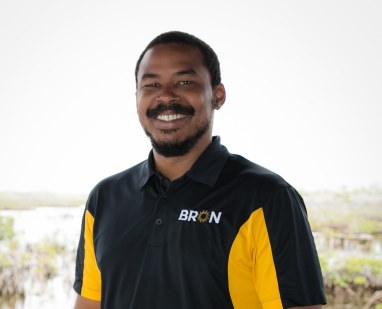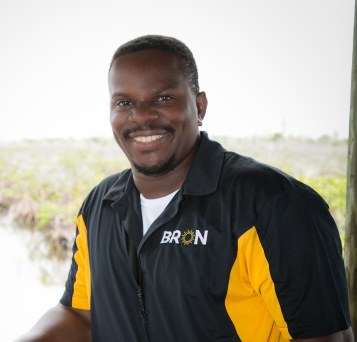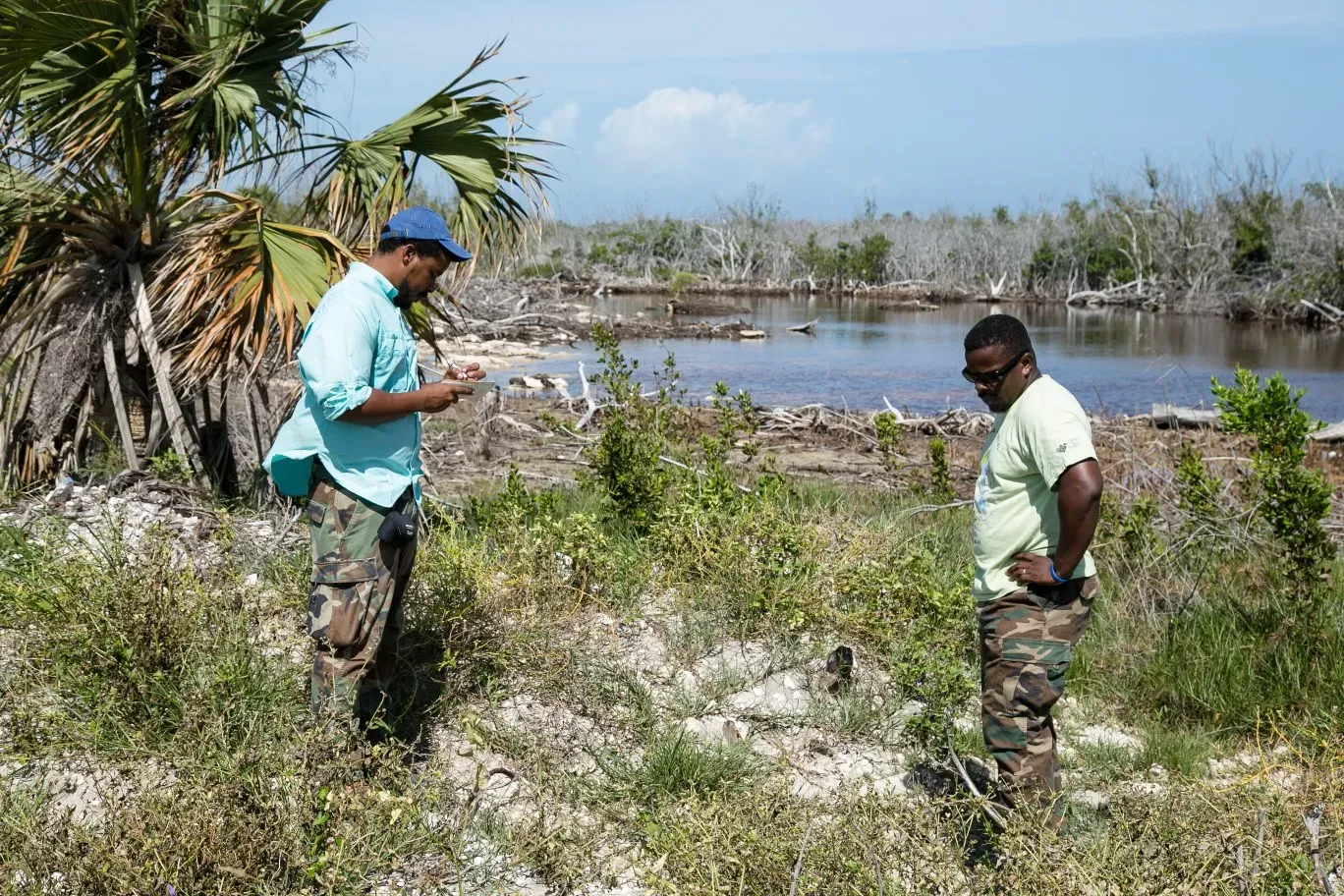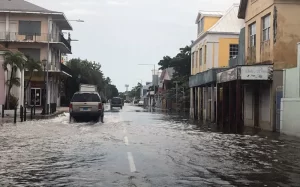In the midst of towering, headless pines, darkened mangroves and an eerie silence, hope grows. A cluster of young Silver Top Palm dances in the sunlight, a symbol of the life that is returning to the North Shore Gap pine forest in East Grand Bahama that was once covered by the menacing tides of Hurricane Dorian.
The pine forest is within a 49,000-acre area at the centre of a comprehensive plan to drive resilience over a three year period that will positively impact the environment, the residents who live there and those who have a vested interest in its revitalization. The aim is to restore natural habitats, revive creek systems, involve citizens in protection and conservation measures and help residents earn money from linking tourism to the environment.
For the future the time to act is now and community involvement is vital.
Despite its diverse plant and animal life and unique charm, East Grand Bahama is vulnerable to destructive threats. Invasive species, disease and sedimentation; overfishing, development, pollution; and storms, sea level rise, coral bleaching and climate change are formidable challenges. Urgent interventions are required […]

The project area for East Grand Bahama has a diverse ecosystem in its plant and animal life and the habitats that sustain them. There are also species that are endemic or native only to The Bahamas and EGB. Investigating and gathering a record of all these life forms is a key part of developing the systems and driving the adaptation to make the environment stronger. IWEco The Bahamas will:
- Create a biodiversity inventory and make it accessible for the public
- Develop and implement a monitoring and evaluation mechanism
- Train citizens in how to help monitor and evaluate the area’s biodiversity

From the inventory we determine the appropriate indicators that give us an idea of what the health of that ecosystem is.
Mark Daniels, BRON, Biodiversity Consultant

One of our jobs at BRON is to help to educate Grand Bahamians about the species that were here and still are here so that they can have a better appreciation for it.
Scott Johnson, BRON, Biodiverstiy Consultant
Article Credit: Island Eco Diary






